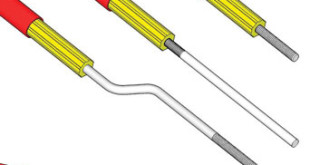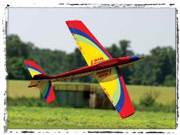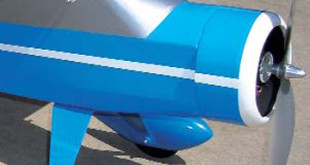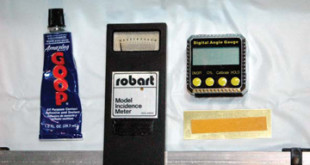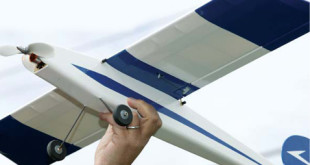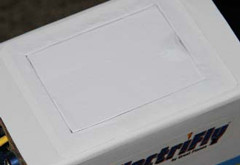For those people who are new to the hobby, the simplest things can cause a great deal of confusion. I have recently noticed that a lot of newcomers are baffled by the assortment of pushrod connectors available. So in an attempt to fill this void, I've put together this little article in hopes of shedding some light on the subject.
Read More »How To's
Glow To Electric Conversion Tips – Part II
Last month, I discussed a generic 10-step process to convert a glow model to electric. This month we will deal with the specific things you may need to do with any model, but concentrating specifically on the Hobbico Avistar.
Read More »Building Round Engine Cowls
Airplanes with round engines have a unique look that appeals to many modelers and aviation enthusiasts. From the early fighters of WWI through Golden Age classics to modern aerobatic aircraft such as the Sukhoi, they have that special attraction. As almost any veteran pilot will tell you, fullsize airplanes have round engines.
Read More »Digitize Your Robart Incidence Meter
If you are an avid model builder, you most likely have an important instrument in the toolbox called an Incidence Meter. For you newcomers, this device allows you to measure the alignment angles of your wing, tailplane engine thrustline and fin to the fuselage itself, so that the aircraft will fly correctly. On high-performance models, these incidence angles are critical to attaining top performance. Mostly used when building models from a kit, plans or scratch-built, an incidence meter is also very handy while setting up most ARFs. One of the most popular incidence meters of all time has got to be the Robart Incidence Meter. It is simple yet very effective, using a pendulum type pointer set against a printed gauge face to provide you with the measured wing angle in degrees.
Read More »Glow To Electric Conversion Tips – Part I
It is now summer 2011 and still there are two questions that crop up in my emails. Can you equate an electric motor to a glow equivalent? How do you go about converting a glow model to electric? The answer to the first question is technically no, but manufacturers do and they are doing the motor a disservice by doing so. The answer to the second question is the main thrust of this article.
Read More »Bending Perfect Pushrods
If you have ever tried to set up solid aileron pushrods with Z-bend linkages, you know the frustration of trying to get the second bend in just the right place, or adjusting a V-bend in the middle of your pushrod. It turns out that there is an easier way. Here is how I bend aileron pushrods for most models with wing-mounted aileron servos. In this case, I was setting up the new Small Stik from Aero Craft Ltd. The same technique can be used on models up to 60 size and beyond, depending on the pushrod wire size.
Read More »Making Hatches
I've been a sport modeler for 30 years. Along the way, I have discovered some simple techniques for making hatches. Here are a few that I've relied on. Given the expansion of onboard widgets of all kinds, you just may find yourself wanting some hatches to better access electrical connections and components on any brand of ARF. First, let's look at how the designers at Goldberg and Great Planes paved the way, and then we'll look at a very simple magnetic hatch you can build in 20 minutes.
Read More »Glow Engine Maintenance
This month I will discuss how I overhaul a basic two-stroke glow engine. I will be disassembling an O.S. .46 SF, cleaning the various parts, doing an inspection and replacing the bearings before reassembling and test running the engine. The techniques shown are applicable to any brand of engine.
Read More »Anderson Powerpole Installation Secrets
Anderson Powerpoles are among the safest, most reliable and most useful of all connectors for electric- powered airplanes. They are easy to disconnect (you won’t damage your plane pulling them apart), expose no live metal contacts and do not require soldering. Here, we will discuss additional key installation tips and tricks that, until now, have been known only to the “experts.â€
Read More »Finishing Foam
Once upon a time, in a land across the sea, there lived a little foam ice chest. Deep in its heart, the ice chest dreamed of flying like the birds. Lo and behold the wizard of ARFs visited the ice chest’s village. The foam ice chest begged the wizard to let it fly. With a whoosh, a boom and a blinding flash of light, the ice chest was transformed into an electric 40-inch Tiger Moth model airplane that did indeed fly with the birds. However, the Tiger Moth’s skin still looked like the skin of an ice chest. It was soft, easily damaged and not very pretty. It could fly, but it was definitely an ugly duckling. Enter Tony Albence, an artist from the land of Delaware, here in the US of A. Tony has been using a process with only common modeling supplies that transforms such foam models. Here is how he helped the pitted, ugly duckling become a durable, smooth-surfaced swan.
Read More »Build A Connector For The Astro Blinky Balancer
Just a few years ago, LiPo cells and packs without balancing connectors were available. If you own any of these early birds and want to bring them into long-term service by adding a balancing connector, this article is for you. Although most of today's packs typically have balancing connectors (admittedly, with different form factors), a number of companies still offer individual cells without such connectors.
Read More » Fly RC Magazine WE LIVE RC
Fly RC Magazine WE LIVE RC
